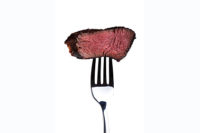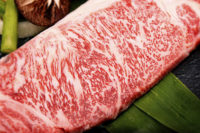 Even though postmortem aging has been widely accepted as the predominant technique for improving the tenderness and overall eating experience of beef, retailers are hesitant to age beef for extended time periods prior to placing it in the retail case because product “freshness” is reduced and a shorter display life may be realized.
Even though postmortem aging has been widely accepted as the predominant technique for improving the tenderness and overall eating experience of beef, retailers are hesitant to age beef for extended time periods prior to placing it in the retail case because product “freshness” is reduced and a shorter display life may be realized.
With the ability to confidently utilize extended aging periods to ensure tenderness, companies supplying beef to retailers should experience fewer claims and account for greater customer satisfaction with beef. This research was intended to clarify the effects of extended postmortem aging periods on beef in the retail sector to provide a recommended aging time for strip loins and sirloin steaks.
In order to mimic beef commonly found in retail supermarkets, paired strip loins and top sirloin butts were obtained from USDA Choice carcasses (Small00-50) and USDA Select carcasses (Slight50-99) on day 3 postmortem from a commercial processing facility. Strip loins and top sirloin butts from an individual animal were fabricated into six portions and vacuum-packaged. Each of the six portions was randomly assigned to one of six postmortem aging periods (14, 21, 28, 35, 49 or 63 days at 32°F). Following aging, steaks were placed in retail display and observed over 72 hours. Trained panelists evaluated each steak for color and visual evidence of oxidation. Following removal from display, steaks were cooked and rated by a trained sensory panel for tenderness and off-flavors, and Warner-Bratzler shear force (WBSF) values were determined.
A minimum of 28 days of postmortem aging was required to reduce the WBSF values of strip loin steaks over steaks from the same strip loin that had been aged for only 14 days, and a minimum of 35 days of postmortem aging was required to improve sensory tenderness ratings.
Sensory panel ratings of off-flavors identified that aging strip loin steaks for 35 days or more prior to retail display was undesirable, as the intensity of oxidized and sour/acidic off-flavors significantly increased. This data suggests that strip loin steaks can be aged for 28 days prior to retail display with little effect on display life; however, trained panelists were not able to distinguish a tenderness advantage for 28-day aged steaks over 14-day aged steaks.
Sirloin steaks required 35 days of postmortem aging to achieve a reduction in WBSF over 14-day aged steaks, and trained sensory panel scores indicated that at least 49 days of postmortem aging was required to improve tenderness. Lean color scores indicated a drastically reduced display life for sirloin steaks aged 35 days or more prior to retail display. Sirloin steaks aged 35 days and more produced undesirable lean color scores in as early as the first 24 hours of retail display. Additionally, sirloin steaks aged only 14 days and displayed an additional 72 hours had relatively intense levels of oxidized and sour/acidic flavors present.
With all factors considered for sirloins, it is not realistic to conclude that sirloins can be aged for a long enough period to improve tenderness and maintain a considerable level of display life. Long aging treatments for top sirloins is most well-suited for foodservice where display life is a non-issue.
For more information, contact Dale R. Woerner, Center for Meat Safety and Quality, Department of Animal Sciences, Colorado State University, Fort Collins, CO 80523, at Dale.Woerner@ColoState.edu. Research was funded by The Beef Checkoff.




Report Abusive Comment